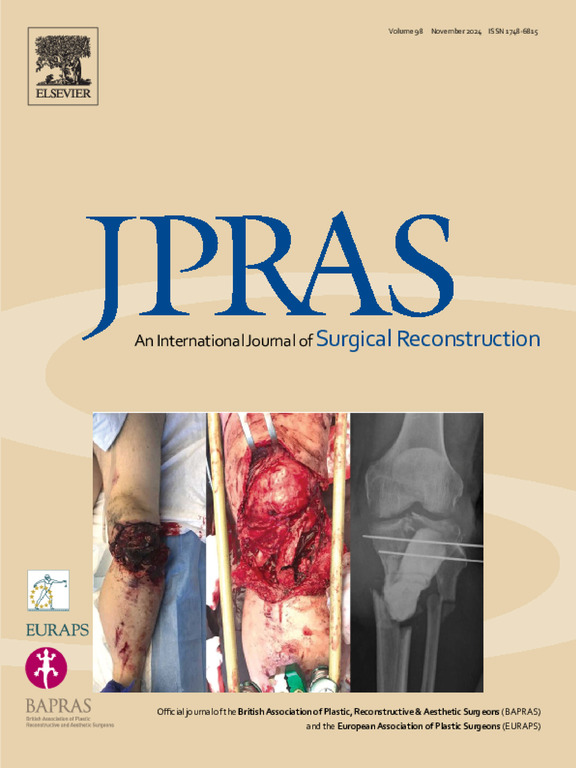The 5-factor modified frailty index as a predictor of outcomes in abdominal wall reconstruction
IF 2
3区 医学
Q2 SURGERY
Journal of Plastic Reconstructive and Aesthetic Surgery
Pub Date : 2025-03-06
DOI:10.1016/j.bjps.2025.03.014
引用次数: 0
Abstract
Background
Frailty is a known predictor of adverse postoperative outcomes in certain settings; however, its utility in abdominal wall reconstruction (AWR) is yet to be established. Patients undergoing AWR typically have health complexities and comorbidities. However, few risk stratification tools exist for this patient population. This study evaluated the relevance and predictive value of the 5-factor modified frailty index (mFI-5) for outcomes following AWR.
Methods
The American College of Surgeons National Surgical Quality Improvement Program database (2011–2022) was searched to identify adult patients undergoing AWR. Patients were stratified according to the mFI-5 (0, 1, 2, and ≥ 3). The demographic and 30-day complication data, such as reoperation, readmission, and wound complications, were collected. Multivariable logistic regression adjusted for covariates, and marginal effects analysis estimated predicted probabilities for outcomes.
Results
In the 26,856 identified patients, mFI-5 ≥ 3 compared with 0 was independently associated with increased odds of all-cause complications (odds ratio [OR] 1.87, 95% confidence interval [CI] 1.54–2.28, p < 0.001), wound complications (OR 1.49, 95% CI 1.17–1.90, p = 0.001), reoperation (OR 1.43, 95% CI 1.03–1.98, p = 0.031), readmission (OR 1.40, 95% CI 1.09–1.80, p = 0.008), and mortality (OR 3.19, 95% CI 1.56–6.52, p = 0.002). Predicted probabilities of complications increased from 15.1% (mFI-5 = 0) to 25.0% (mFI-5 ≥ 3), and almost 50% of the patients in the most-frail cohort were discharged to a non-home setting.
Conclusion
The mFI-5 is associated with increased risk of adverse outcomes in AWR, with higher frailty scores linked to elevated rates of significant postoperative complications. Incorporating frailty assessments into preoperative workflows may improve patient counseling and risk stratification.
求助全文
约1分钟内获得全文
求助全文
来源期刊
CiteScore
3.10
自引率
11.10%
发文量
578
审稿时长
3.5 months
期刊介绍:
JPRAS An International Journal of Surgical Reconstruction is one of the world''s leading international journals, covering all the reconstructive and aesthetic aspects of plastic surgery.
The journal presents the latest surgical procedures with audit and outcome studies of new and established techniques in plastic surgery including: cleft lip and palate and other heads and neck surgery, hand surgery, lower limb trauma, burns, skin cancer, breast surgery and aesthetic surgery.

 求助内容:
求助内容: 应助结果提醒方式:
应助结果提醒方式:


